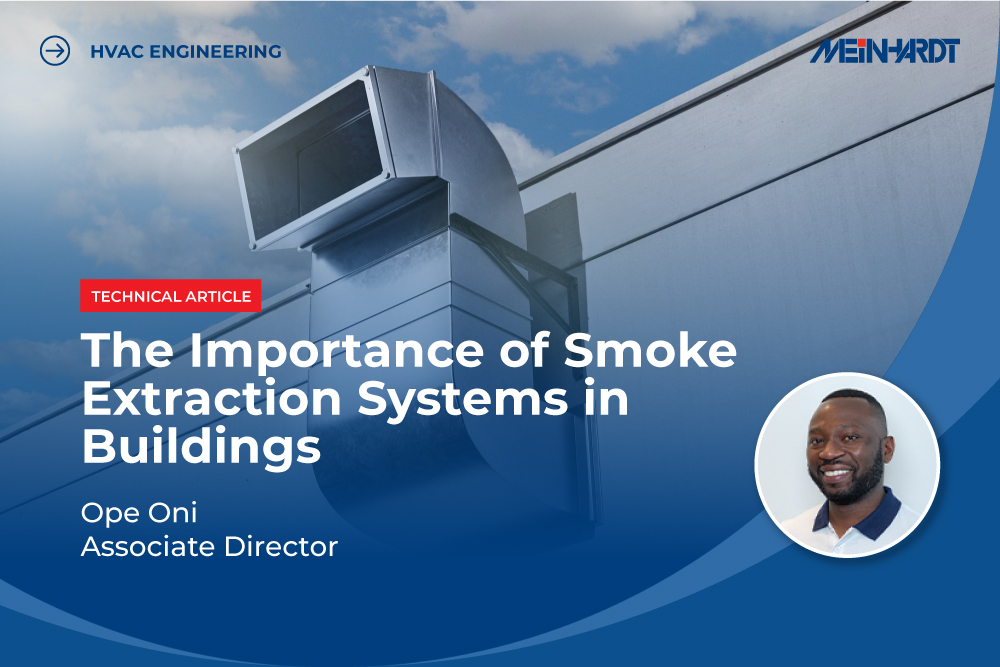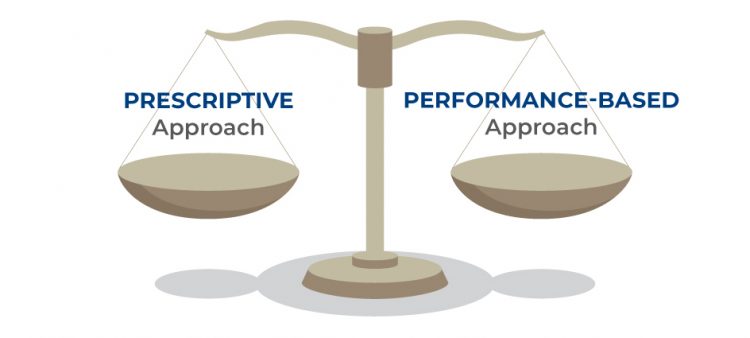The Importance of Smoke Extraction Systems in Buildings: Utilizing Prescriptive and Performance-Based Strategies
In the realm of building safety, the significance of smoke extraction systems cannot be overstated. As integral components of fire protection strategies, these systems play a pivotal role in safeguarding occupants and minimizing property damage during emergencies. However, the approaches to designing and implementing these systems vary, with prescriptive and performance-based strategies offering distinct advantages. In this comprehensive exploration, we delve into the importance of smoke extraction systems in buildings and examine how prescriptive and performance-based approaches contribute to enhancing safety and mitigating fire risks.

Understanding Smoke Extraction Systems
Before delving into the intricacies of prescriptive and performance-based strategies, it’s essential to understand the fundamental role of smoke extraction systems in building safety. These systems are designed to manage smoke in the event of a fire, facilitating the safe evacuation of occupants and minimizing property damage. Key components of smoke extraction systems typically include smoke detectors, control panels, extraction fans, smoke dampers, and exhaust shafts. Together, these elements work in tandem to detect smoke, initiate the extraction process, and expel smoke from the building, thereby creating a safer environment for evacuation and reducing the risk of respiratory harm.

Prescriptive Strategies: Setting Clear Guidelines
Prescriptive strategies involve adhering to specific codes, standards, and guidelines established by regulatory authorities. These regulations dictate the minimum requirements for smoke extraction systems in buildings, including the placement of smoke detectors, the sizing of extraction fans, and the design of exhaust shafts. Prescriptive approaches provide clear directives for designers, builders, and inspectors, ensuring consistency and compliance with safety standards across different projects.
Advantages of Prescriptive Strategies
Prescriptive strategies offer several distinct advantages:
- Clarity and Certainty: Prescriptive codes provide clear guidelines for designing and installing smoke extraction systems, eliminating ambiguity and ensuring consistent implementation across various building projects.
- Ease of Compliance: Prescriptive requirements simplify the process of compliance for designers and builders, as they can follow established guidelines without the need for complex calculations or performance assessments.
- Regulatory Compliance: Adhering to prescriptive codes ensures regulatory compliance, reducing the risk of legal penalties and liabilities for building owners and stakeholders.
Performance-Based Strategies: Tailoring Solutions to Specific Needs
Performance-based strategies, in contrast, focus on achieving specific performance objectives rather than adhering to predefined rules. These approaches involve conducting performance assessments, simulations, and risk analyses to determine the most effective smoke extraction solutions based on the unique characteristics of each building. Performance-based strategies offer flexibility and customization, allowing designers to tailor smoke extraction systems to meet specific safety goals and operational requirements.
Advantages of Performance-Based Strategies
Performance-based strategies offer several key advantages:
- Flexibility and Adaptability: Performance-based approaches allow for greater flexibility in designing smoke extraction systems, taking into account factors such as building layout, occupancy types, and fire risk profiles.
- Optimized Solutions: Performance-based strategies enable designers to optimize smoke extraction systems based on detailed performance assessments and simulations, resulting in more efficient and effective solutions tailored to the specific needs of each building.
- Innovative Solutions: Performance-based approaches encourage innovation and creativity in smoke extraction system design, fostering the development of advanced technologies and techniques to enhance safety and resilience.
Balancing Prescriptive and Performance-Based Approaches
While both prescriptive and performance-based strategies offer distinct advantages, the most effective approach often involves a combination of the two. By leveraging prescriptive guidelines as a foundation and supplementing them with performance-based analyses, designers can achieve optimal results that meet regulatory requirements while also addressing the specific needs and challenges of each building.

Case Study: Integrating Prescriptive and Performance-Based Strategies
Consider a high-rise office building located in a densely populated urban area. Prescriptive codes mandate the installation of smoke detectors in all common areas, the sizing of extraction fans based on building occupancy, and the provision of dedicated smoke exhaust shafts. While these requirements provide a baseline for compliance, performance-based analyses reveal additional opportunities for optimization.
Performance simulations conducted by fire engineers demonstrate that the placement of additional smoke detectors in high-risk areas, such as stairwells and mechanical rooms, can improve detection capabilities and facilitate faster response times. Furthermore, the incorporation of variable-speed extraction fans and the implementation of smoke control systems based on real-time monitoring data enhance the efficiency and effectiveness of smoke extraction operations.
By integrating prescriptive guidelines with performance-based analyses, the building’s smoke extraction system achieves optimal performance, ensuring the safety of occupants and minimizing the potential for property damage in the event of a fire.
Conclusion: Striving for Safety and Resilience
In conclusion, smoke extraction systems play a critical role in ensuring the safety and resilience of buildings in the face of fire emergencies. Whether employing prescriptive or performance-based strategies, the goal remains the same: to create a safer environment for evacuation and mitigate the risks associated with fires. By leveraging the strengths of both approaches and adopting a balanced approach to design and implementation, stakeholders can uphold the highest standards of safety, compliance, and resilience in the built environment. Prioritizing the integration of robust smoke management strategies underscores a commitment to protecting lives and property, ensuring a safer and more secure future for all.
Meinhardt’s expertise in prescriptive solutions provides a reliable framework honed from years of experience and innovative thinking. Additionally, collaborating with skilled Fire Consultants for performance-based solutions opens avenues to leverage cutting-edge technology and meticulous analysis. This enables us to uphold industry standards, paving the path towards safer, smarter buildings for the future.

Ope Oni
Associate Director
